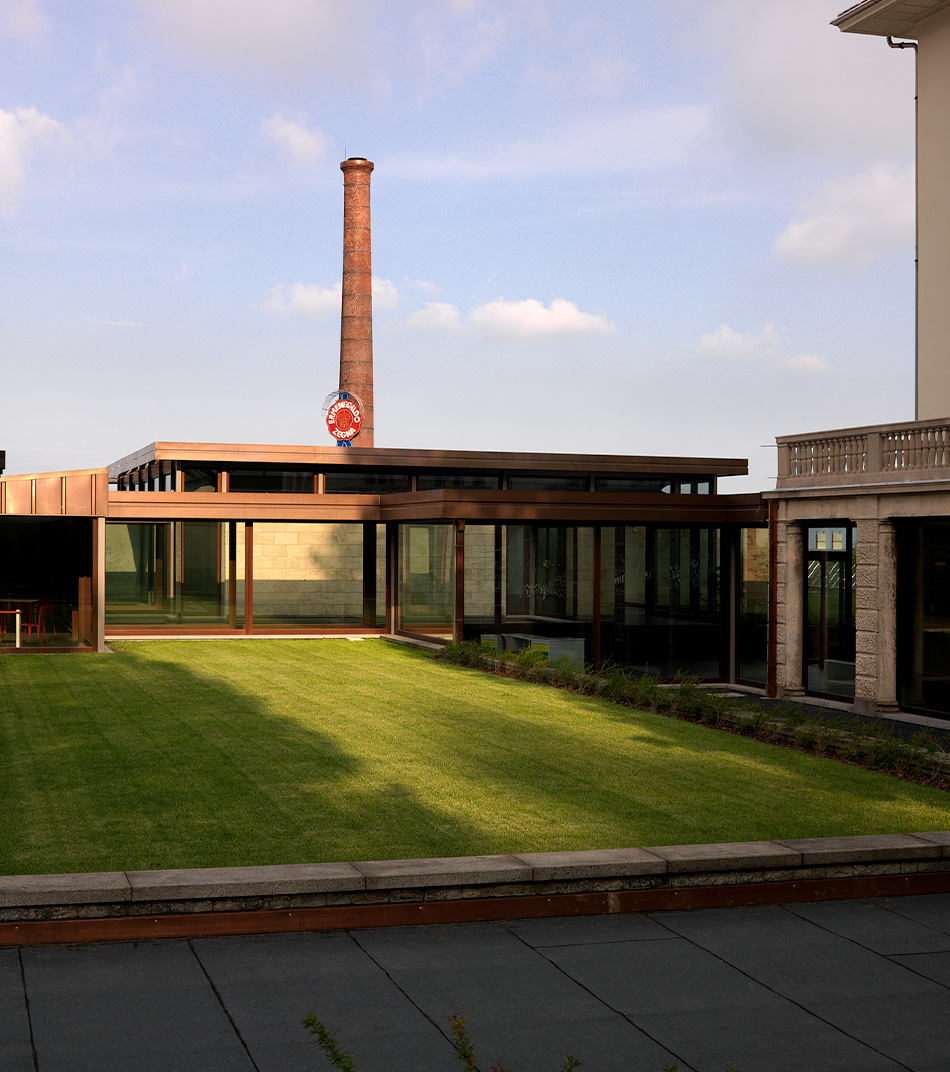Discovering the creativity that’s in all of us was one of the objectives of an artistic project – ProfilO – for 18 students at the Istituto Alberghiero (hospitality training school) in Trivero. The designers of the project – Gigi Piana, visual artist and performer, and photographer Ewa Gleisner, who together set up Associazione + Vicino – guided the students in their discovery of contemporary visual art and performance art through personal experimentation with artistic languages to stimulate their creative and expressive potential.
To find out more about this initiative, we interviewed the project’s art director, Gigi Piana.
How did your relationship with Fondazione Zegna come about?
The first contacts with the Foundation were thanks to the FAI Spring Days two years ago, when I worked on the production of “A spasso nell’arte” (wandering around art), a workshop designed to encourage kids to discover the contemporary art works of the “All’Aperto” project. This led to the idea of creating a course for high school students.
What was the germ of the profilO project?
In my work there’s always connection between the various art forms, performance art and the visual arts. In my creation I use fabrics and weaving a lot. For me, canvas is not only the base line in art history but a metaphor for the interweaving of relationships, of being together with people. In our sessions with the students the theme of encountering and interweaving was fundamental. ProfilO builds on what the kids have on their social networks – a personal and individual profile – and then develops the interweaving aspect, which is what they have to construct together, thus emerging from their individuality.
How were the workshops organized?
We planned a cycle of ten sessions at Casa Zegna between January and March, three months. The first thing to do was get the students to approach art and dismantle their prejudices against contemporary art. In each session we looked at the theory underlying the work of a significant artist in the field of performance art and the visual arts. We started with Allan Kaprov, the inventor of performance art, then looked at Marcel Duchamp and explored the relationship between art objects and context. We took in Jackson Pollock, Lucio Fontana, Michelangelo Pistoletto and Marina Abramovic, whose work explores relations between artists and the public. Each session had a theoretical part and a practical exercise. The students were involved in a performance or in an experimentation of a technique used by a given artist. We provided them with materials to re-elaborate on the basis of what they learned in the theory part.
What were the students’ reactions?
They had to react to the difficulty of understanding contemporary art and then the difficulty of interacting in a group. First of all, they had to deal with their own timidness and learn to get to know one another, bring down male-female taboos and get used to working together. This experiential course was very effective in terms of learning and every element found a meaning when it was shared. In the first session, for example, I brought some crates of fruit to Casa Zegna. Having overcome their initial surprise and diffidence, they gradually became aware of the abstractive power of the object and started to create. They got over their timidness at the same time, as understanding grew within the group. Their interaction with objects and space created their first performances.
What objectives did you set yourselves at the start of the project?
The purpose of the project wasn’t to create performers but to help the students understand the idioms of the visual arts and use them in day-to-day life. The main objective was to stimulate creativity through art: being dynamic and creative is fundamentally important in contemporary life. Work on performing techniques and visual art helped the kids hone their critical sense of the reality surrounding them and improve their communicative skills. Another objective we achieved was that of stimulating relations and team spirit, which helped them overcome shyness and reach understandings. Lastly, we improved their awareness of their bodies, in space and in the environment they move in. In this respect it was vital to enable them to watch what others were doing. In this way they were able to perceive the relationship between performer and audience, experience it from inside and outside, thus gaining awareness of the aesthetic and visual aspects of a performance.
Did the students actually produce a work of art during these workshops?
During the course they created a special sort of picture by interweaving two images printed on pvc crystal. The picture was the result of in-depth reflection that translated the identity of each of them into visual terms. The photograph in the foreground is of their face, as portrayed by Ewa Gleisner, while the second one is a landscape that the students chose to photograph to represent their interior nature. These kids are very attached to their territory, they love its nature, purity, colors… This experience was vitally important for reaching the essence of people, removing masks, reflecting on the nature of relations between people, bonds with the territory in which they live. All this helped them consciously define their identity.
What’s happening at Casa Zegna on 7 April?
It’s going to be a “public rendering” of the students’ experience, with a performance and a vernissage of the works produced during the workshops. The event will be held at Casa Zegna on Friday 7 April, at 18.30. Participation is free of charge, with drinks afterwards.
Information
Casa Zegna Via Marconi 23 – Trivero
Tel. 015 75914634
@ photo: Ewa Gleisner


